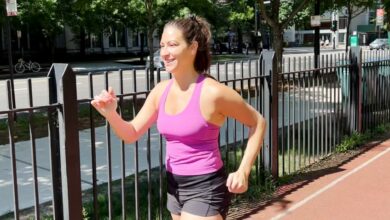Once upon a time, people didn't care much for a six-pack of abs: Movie stars in Hollywood didn't need them to gain important roles, athletes didn't become billboard stars because of them, and people were not obsessed with celebrities because of them. This era, however, is long past now.
A six-pack of abs has become the ultimate sign of masculinity in the eyes of a lot of people, and working out to gain these muscles in particular has become a ritual in most gym rooms and fitness classes. It might seem hard to do, but gaining a six-pack of abs is easier than you might imagine. This story will give you some general outlines for how to gain that coveted six-pack.
To accomplish your goal, you need to do two things: lose the fat, and train the muscles. But firstly, you need to be already fit and well-exercised in the rest of your body to start working on these muscles. You cannot jump from being a beginner trainee to working out on your abs.
Before you start working on your abs, you should understand what these muscles do. The muscle known as rectus abdominis works with the back muscles to maintain correct posture and stabilize the spine. These muscles are not just for you to show off and win “Mr. Wet T-Shirt” on the beach, so naturally you need to work on both your abs and the back muscles to get the results you need. Including a lot of squats and back lifts in your routine can be extremely helpful in building your torso muscles in general.
Losing fat usually needs both dieting and cardio training. Your normal 20-minutes run on the treadmill is not enough to lose the layers of fat from around your belly; you need at least a daily 60-minutes run on the treadmill or around the streets with a steady high speed. Your diet should be high on vitamins and low on fat, and it needs to be planned by a doctor who studies your body's needs and understands them.
Training your muscles starts with the usual ab curls (crunches). Lie on the floor with your arms supporting the back of your neck (do not put your hands on your head, as you need to support your spinal cord, not your head). Your knees should be bent. Now raise your upper torso (shoulders and chest) towards your knees using only your abdominal muscles. It is extremely important not to lift your entire back off the floor, as this can cause back strain.
After spending a week or ten days doing crunches, you can start doing sit-ups. Sit-ups are useful for a more skilled trainee. Lie on the floor with your feet nailed to the floor, knees up and your hands are crossed on your chest. Wedge your feet underneath a heavy object and then sit all the way up. You can lift your whole lower back off the floor, and try to keep your back straight with no hunching.
Repeat the exercise until it becomes relatively easy, and then you can put some extra weight on your chest to make it more challenging.
Another exercise to focus on your lower abs muscles is leg lifts. Lie on the floor with your legs straight up (at 90 degrees with your body) and hands on the floor to support your back. Push your legs up in the air, lifting your lower torso up without changing the position of your upper back from the floor.
Finally, the six-pack abs are not easily gained, so do not get frustrated when they do not appear after two days of working out. Try to keep a positive attitude toward the whole situation and, most importantly, try to focus on your health and avoid injuries by making sure you are not over-exercising.




